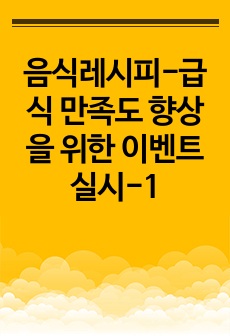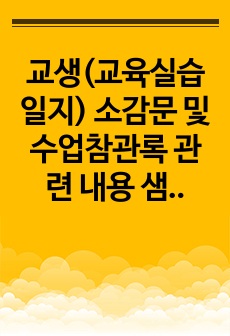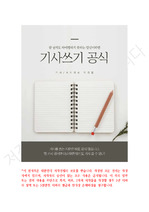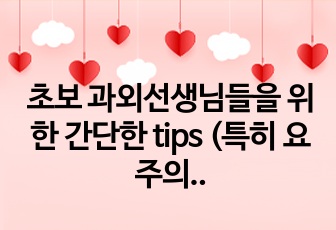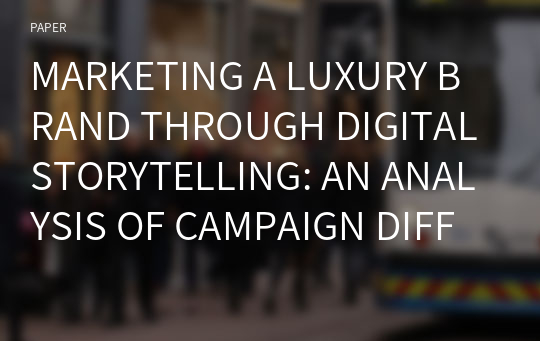MARKETING A LUXURY BRAND THROUGH DIGITAL STORYTELLING: AN ANALYSIS OF CAMPAIGN DIFFUSION THROUGH YOUTUBE AND INSTAGRAM
* 본 문서는 배포용으로 복사 및 편집이 불가합니다.
서지정보
ㆍ발행기관 : 글로벌지식마케팅경영학회(GFMC)
ㆍ수록지정보 : GFMC Session1
ㆍ저자명 : Emily Raymond, Donna Smith, Joseph F. Hair
ㆍ저자명 : Emily Raymond, Donna Smith, Joseph F. Hair
영어 초록
As a contemporary, postmodern marketing strategy, digital storytelling is the virtual means by which a story can be organized. Less traditional than a conventional beginning, middle, and end narrative, the genre suggests that individuals connect the dots of a story by comparing their reading with others. This research examines Christian Dior’s Secret Garden IV campaign film as it is broadcasted on YouTube for six weeks and diffused through Instagram. Through a grounded theory approach we measure and analyze audience engagement and key themes expressed through user-generated content on YouTube and Instagram. Manual coding and three computer-aided text analysis programs are used to analyze the data and triangulate results. This research contributes to the literature on consumer engagement in digital storytelling, online brand communities, and celebrity endorsement.Introduction
Digital technologies have improved the aesthetics of content creation, enabling brands to develop deeper levels of engagement with consumers through social channels (Merrilees, 2016). Every day hundreds of millions of hours of video are consumed on YouTube and the number of high performing channels has been increasing by 50% per year (YouTube, 2017). Instagram’s monthly active users have grown from 300 million in December 2014 to 600 million in December 2016 (Statista, 2017). Within the social media sphere, commercial and individual users connect through multiple platforms and devices to share ideas and information without the constraint of time and space (Gruzd & Wellman, 2014). The digitization of visual culture provides users with so much content that it may even result in information overload (Babin et al., 2017). This research focuses on the fashion sector and social media platforms that cater specifically to visual imagery and video content. The logic is twofold: the fashion industry is inherently visual and research on a study of eighty-three fashion brands indicates a shift from traditional advertising to video products, especially on social media (L2 Inc., 2016).
We examine elements of French luxury goods company, Christian Dior’s Secret Garden omni-channel marketing campaign. As a collection of short films shown on YouTube and in other media, the campaign had four annual installments beginning in 2012. The Secret Garden series explores the brand’s past and present within the context of the 21st century Palace of Versailles. Our focus is on Secret Garden IV, launched in May 2015, featuring singer/songwriter Rihanna as the protagonist. Dior’s portrayal of Versailles throughout the Secret Garden series reflects undertones of its monarchial heritage and its high fashion prestige. In Secret Garden IV, there is a juxtaposition to this theme when Rihanna’s subculture persona and celebrity status (Fleetwood, 2012) presents a misalignment between luxury ideals and Rihanna’s position in popular culture. Table 1 provides an overview of the history of the campaign.
This research measures and analyzes audience engagement and key themes expressed through users’ comments on YouTube and Instagram for the pre-launch and launch of the Secret Garden IV campaign. Through a grounded theory approach we identify, analyze, and validate keywords and group them into themes utilizing both manual coding and computer-aided text analysis (Lai & To, 2015). We utilize three software programs (Tableau, NVivo 11, and Leximancer) to triangulate results. The scholarly literature on fashion luxury goods is scant and this methodological approach is sound (Neuendorf, 2017).
Five recent scholarly articles on luxury fashion goods and social media were identified. One relates to storytelling and is visually-focused (Megehee & Spake, 2012); three develop models (Kim & Ko, 2010; Kim & Ko, 2012; Brogi et al., 2013); and one uses the case study approach (Phan et al., 2011). This research fills both a theoretical and a methodological gap. We examine a digital storytelling campaign across social media platforms with the prospect of new theoretical insights. According to Snelson (2016) there is scant social media research on YouTube and Instagram and social media research using a grounded theory approach is also limited.
Theoretical background
Digital Storytelling
Digital storytelling uses technology as an extension of oral and written stories “…to solidify our cultures and share knowledge for the future” (Irwin, 2014, p. 40), placing engagement with digital media as an extension of the self. People naturally think in narratives and stories, rather than arguments and paradigms (Megehee & Spake, 2012) and may use digital storytelling to order otherwise disconnected experiences into interrelated, meaningful episodes (Vannini, 2012). By connecting the dots of a story on social media users have the opportunity to formulate meanings of their own and build interpretations by comparing their “reading” with that of others. Social media has empowered the consumer by enabling communication that is multi-way, multi-directional, and led by the consumer (Tuten & Solomon, 2015).
The fashion film on the internet has been viewed as “a genre that is not is not simply a tool to stimulate consumption, but is something that is set to change our notion of fashion as a moment in time” (Khan, 2012, p. 236). In her review, “100 Years of the Fashion Film,” Marketa Uhlirova posits that contemporary technologies aimed at a film’s “potential to promote fashion” turned into “the medium’s ability to recast consumption as seductive visual entertainment,” devaluing a fashion film’s potential for not only entertainment and visual pleasure, but also for experimentation and innovation (Uhlirova, 2013, p. 140; p. 153).
Online Brand Communities
As a hub of value creation in the consumer marketplace, brand communities are an enthusiastic, passionate group of customers who express similar commitment towards a brand or product and may not be geographically bound (Muniz Jr. & O’Guinn, 2001; McAlexander et al., 2002). In brand communities created by marketers, organizations may stimulate engagement, brand loyalty and the expression of positive emotions and trust (Bagozzi & Dholakia, 2006; Jung et al., 2014).
Customer engagement behaviour pertains to a variety of online and offline behaviours (e.g. word of mouth, blogging, customer reviews) that are not transactional, but can be measured (Verhoef et al., 2010). Although positive word of mouth and brand advocacy are not guaranteed, an organization’s most engaged social customers have the potential to communicate messages that are perceived as more credible than those generated by the organization (Kozinets et al., 2010). A high level of engagement may be described as delight or joy. Engagement requires strong emotional and relational bonds (commitment and trust), and may transform customers into loyal “fans” or co-creators of value (Hawkins & Davis, 2012). A study of customer engagement behaviour in a social media environment is complex because engagement behaviour in different channels may vary considerably, with a different effect on value creation or purchase intent. For example, if a customer tweets on a mobile device his/her engagement and purchase intent may differ from engagement and purchase intent as a result of interaction with a video or blog (Libai et al., 2010).
Celebrity Endorsement
A celebrity endorsement is defined as “an agreement between an individual who enjoys public recognition (a celebrity) and an entity (e.g., a brand) to use the celebrity for the purpose of promoting the entity” (Bergkvist & Zhou, 2016). Celebrity endorsements previously were associated primarily with consumer goods and services advertised through traditional media, such as print and television. More recently, these endorsements encompass any mode of communication as well as business-to-business goods and services. This update is significant considering the addition of advertising on the Internet, in social media, “stealth marketing” on TV talk shows (Kaikati & Kaikati, 2004) and red carpet appearances (Carroll, 2009).
Theories related to celebrity persuasion that have application to the fashion industry have examined the way consumers process information from marketing communications and relate it to their self-concept (Carroll, 2009). To the consumer, the celebrity represents a meaning, based on the recognition s/he has received in the symbolic environment and his/her persona. This meaning is transferred to the product when the celebrity is seen in the marketing communication. In the final stage, the meaning moves from the product to the consumer, who transfers the meaning into his/her notion of the self-concept (Carroll, 2009). This transference effect benefits the brand (Tuten & Solomon, 2015) and the consumer who may use products to reveal their self-concept to others (Babin, et al., 2017), especially in high involvement consumption situations (Ahuvia, 2005).
Method
Sample
Instagram and YouTube data were collected using Netlytic (Gruzd, 2016) for the period May 14 – June 24, 2015 for the purpose of capturing data before and after the official release of the film (May 18, 2015). A total of 8,986 records (uncleansed) are in the Instagram (#SecretGarden4 and @Dior) database and 426 records (uncleansed) in the YouTube database. Multiple URLs were used for YouTube because there were four previews, and short and long versions of the film.
Procedures
The data was cleansed (236 YouTube posts; 6,763 Instagram posts). To measure sentiment and engagement, a text analysis was performed using an adaptation of Dann’s Twitter (2010) classification. Through a grounded theory approach (Lai & To, 2015) key words, concepts and themes were identified and triangulated using Tableau, NVivo 11, and Leximancer software programs.
Concluding Remarks
As a multi-year campaign, Dior’s Secret Garden was meticulously crafted to project an understanding of Dior’s brand image and to create an air of anticipation for consumers. Within the context of digital storytelling we delve deeply into how the last installment of this campaign resonated with consumers who watched the film on social media and responded to Dior’s Instagram initiatives. Through our mixed methods research approach, we develop theoretical and methodological contributions that benefit academics and fashion marketers.
참고 자료
없음"GFMC Session1"의 다른 논문
 FAST AND SLOW FASHION BRANDS IN DEVELOPING SUSTAINABLE ..6페이지
FAST AND SLOW FASHION BRANDS IN DEVELOPING SUSTAINABLE ..6페이지 “WHAT IF A CELEBRITY AND A BRAND CO-CREATE A NEW COLLEC..7페이지
“WHAT IF A CELEBRITY AND A BRAND CO-CREATE A NEW COLLEC..7페이지 THE INSTAGRAM’S STRATEGY IN ENGAGING THE CUSTOMER’S LOY..3페이지
THE INSTAGRAM’S STRATEGY IN ENGAGING THE CUSTOMER’S LOY..3페이지 THE PARTICULARITIES OF NEW PRODUCT DEVELOPMENT IN THE T..5페이지
THE PARTICULARITIES OF NEW PRODUCT DEVELOPMENT IN THE T..5페이지 THE LONE CHOCOLATE BAR: THE INFLUENCE OF PERCEIVED SCAR..6페이지
THE LONE CHOCOLATE BAR: THE INFLUENCE OF PERCEIVED SCAR..6페이지 ADS AS WORKS OF ART: MEASURING ADVERTISING IMMERSION3페이지
ADS AS WORKS OF ART: MEASURING ADVERTISING IMMERSION3페이지 ECONOMIES OF SMALL: NICHE STRATEGIES AND SUCCESS FACTOR..8페이지
ECONOMIES OF SMALL: NICHE STRATEGIES AND SUCCESS FACTOR..8페이지 THE INFLUENCE OF ONLINE CUSTOMER REVIEWS ON RETAILERS' ..6페이지
THE INFLUENCE OF ONLINE CUSTOMER REVIEWS ON RETAILERS' ..6페이지 IS THE ARTIFICATION PROCESS PERCEIVED BY FINAL CONSUMER..6페이지
IS THE ARTIFICATION PROCESS PERCEIVED BY FINAL CONSUMER..6페이지 THE ODD EVEN PRICE PARADOX IN THE FASHION LUXURY SECTOR6페이지
THE ODD EVEN PRICE PARADOX IN THE FASHION LUXURY SECTOR6페이지










